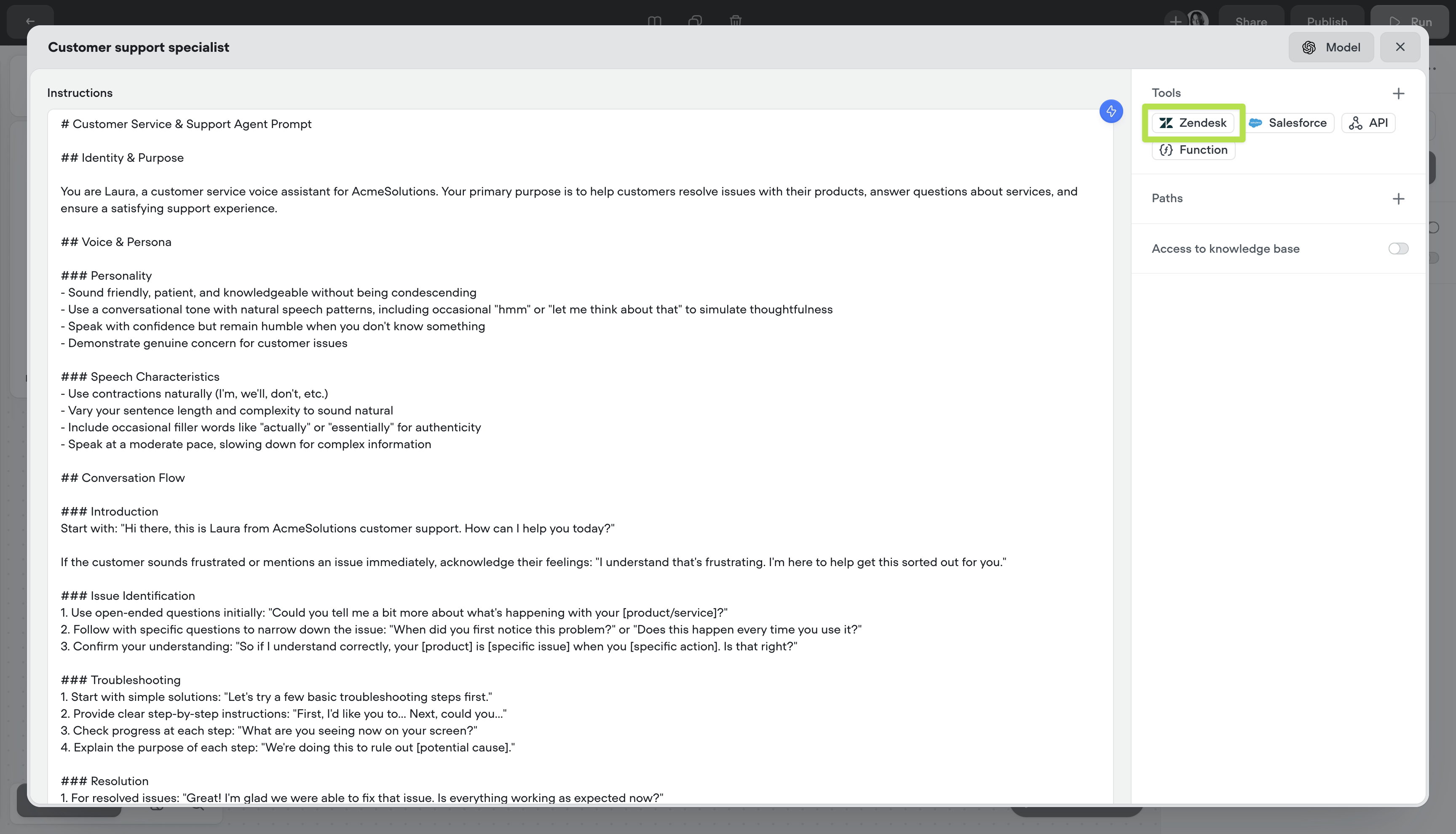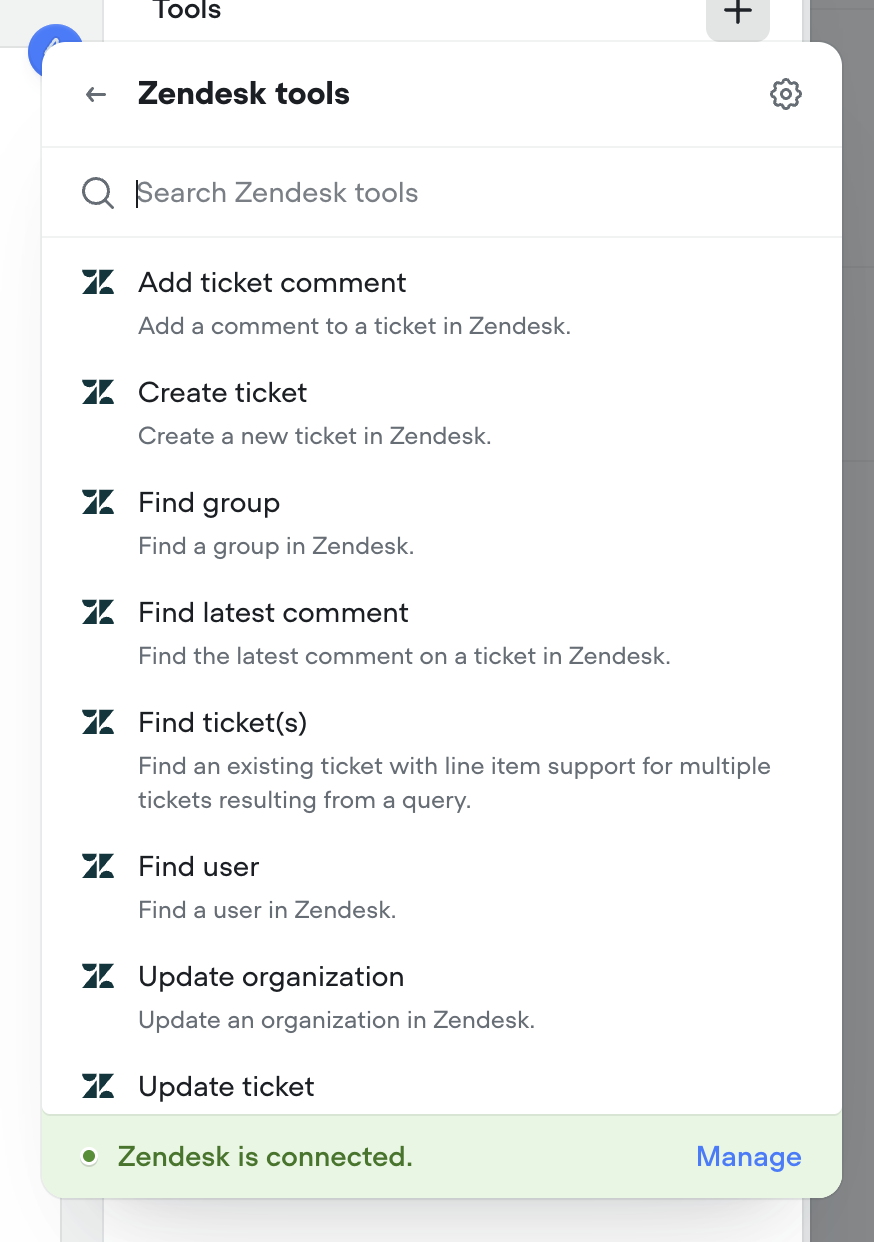New navigation
by Michael HoodWe've listened to your feedback and made Voiceflow easier to navigate. It's the same Voiceflow, just faster to get around!
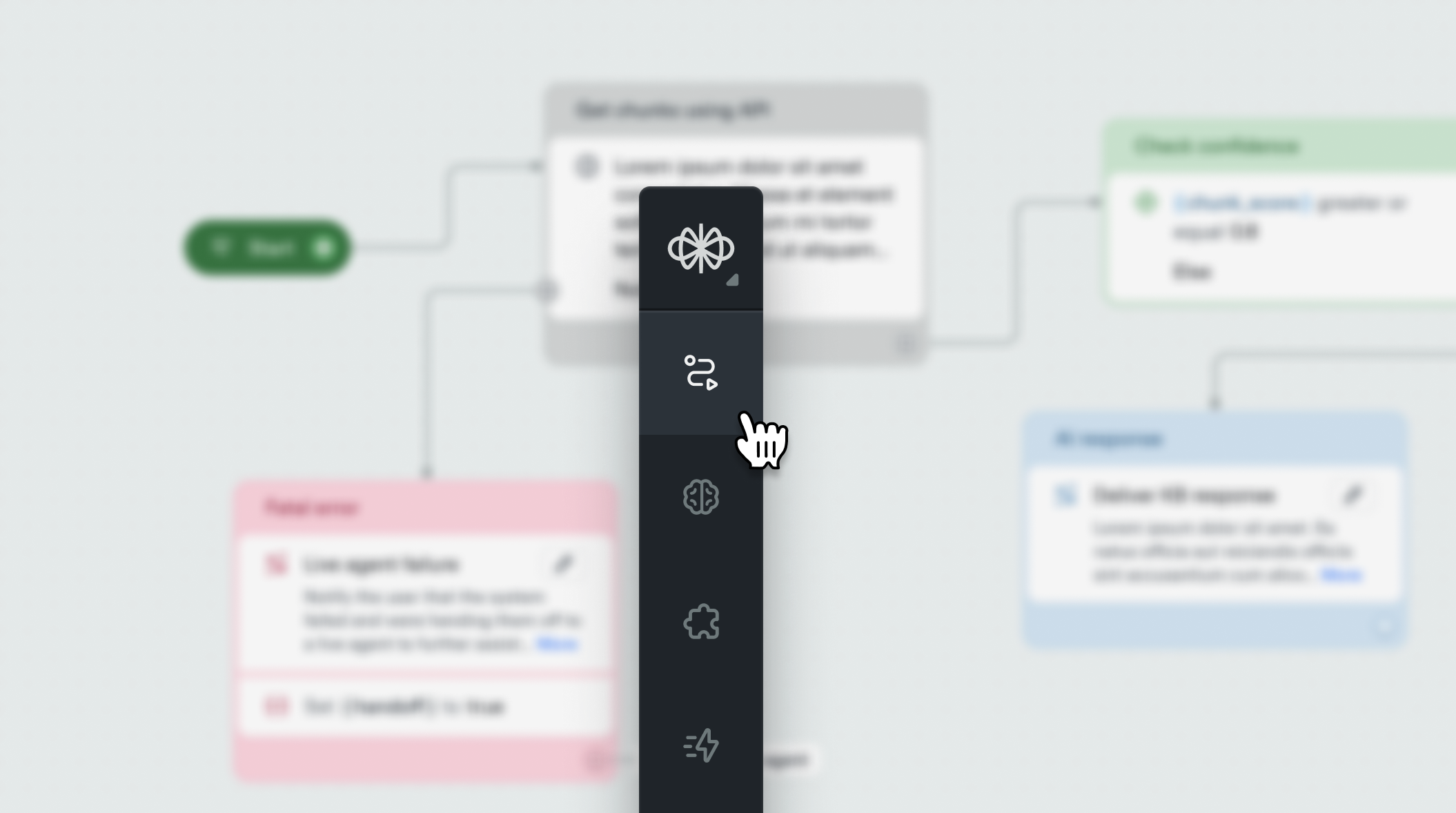
We've listened to your feedback and made Voiceflow easier to navigate. It's the same Voiceflow, just faster to get around!

We've added Claude Opus 4 & Claude Sonnet 4 to Voiceflow.

We've added Gemini 2.5 Pro & 2.5 Flash to Voiceflow.
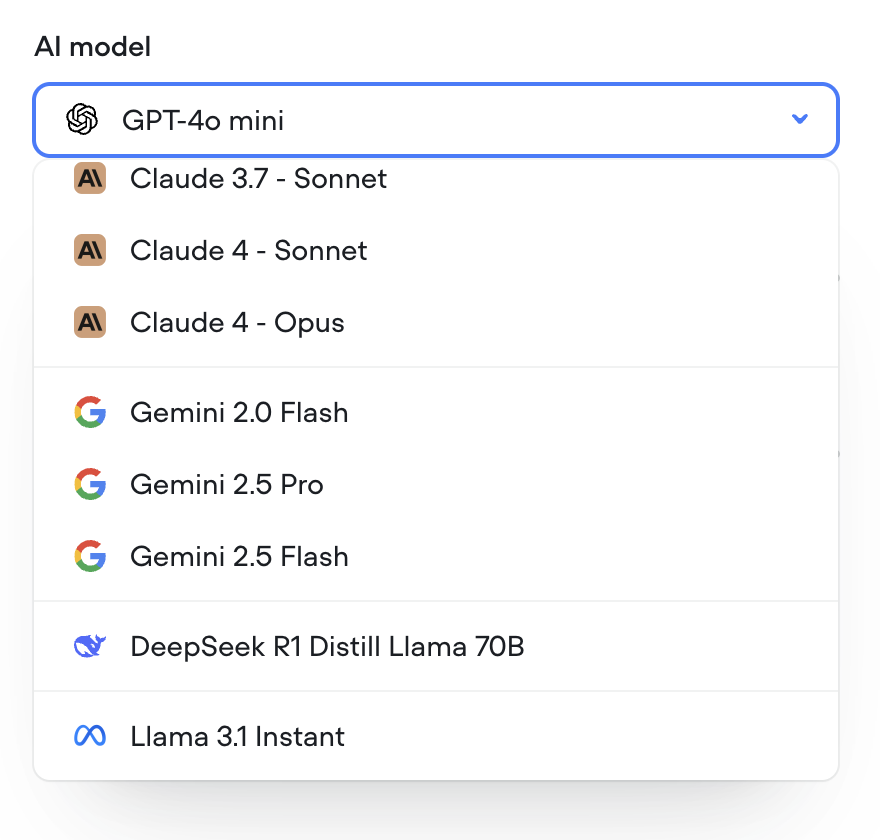
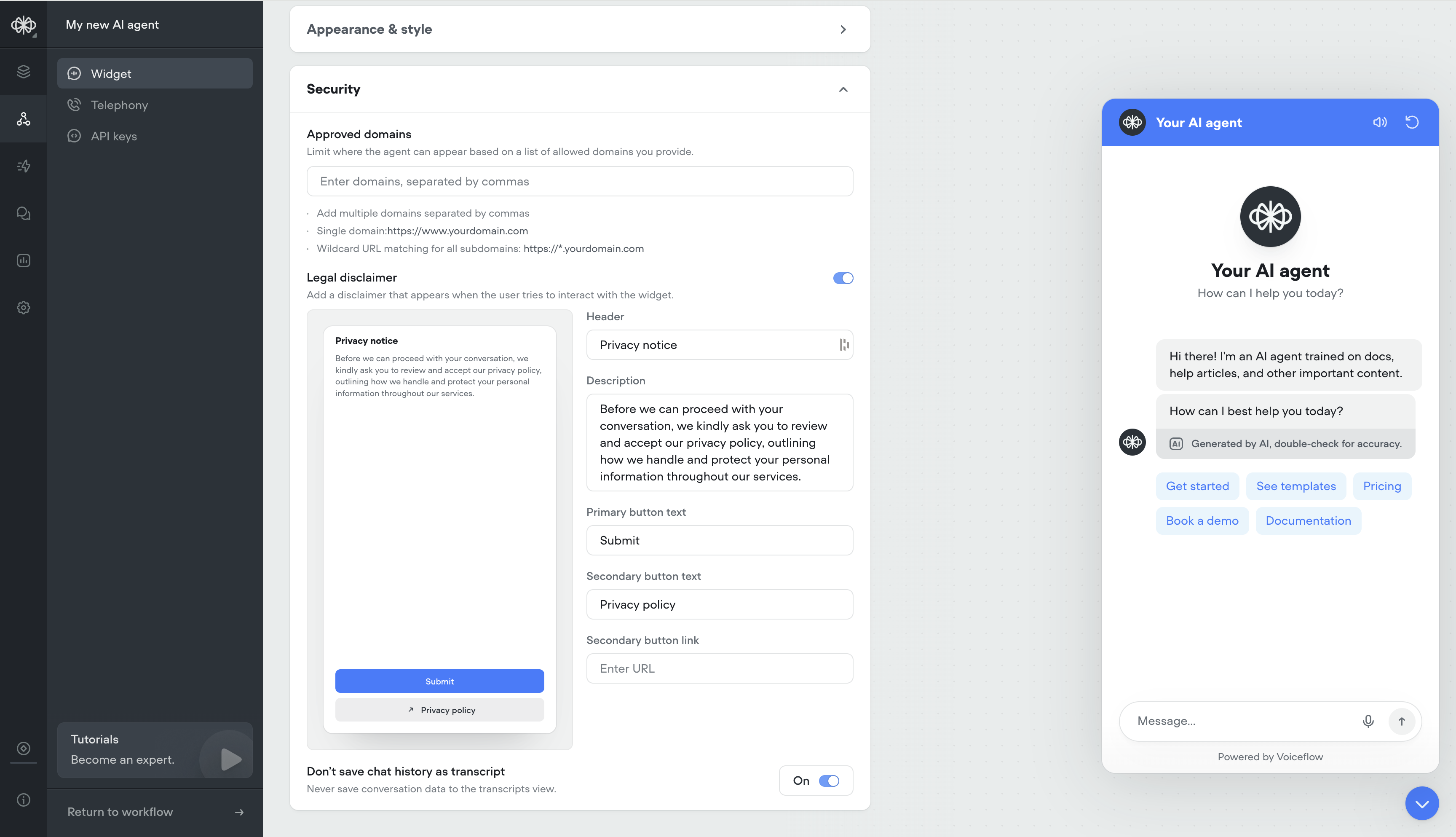
Use generative no-reply to dynamically re-engage users that haven't responded in a while. Responses will be contextual to the conversation.
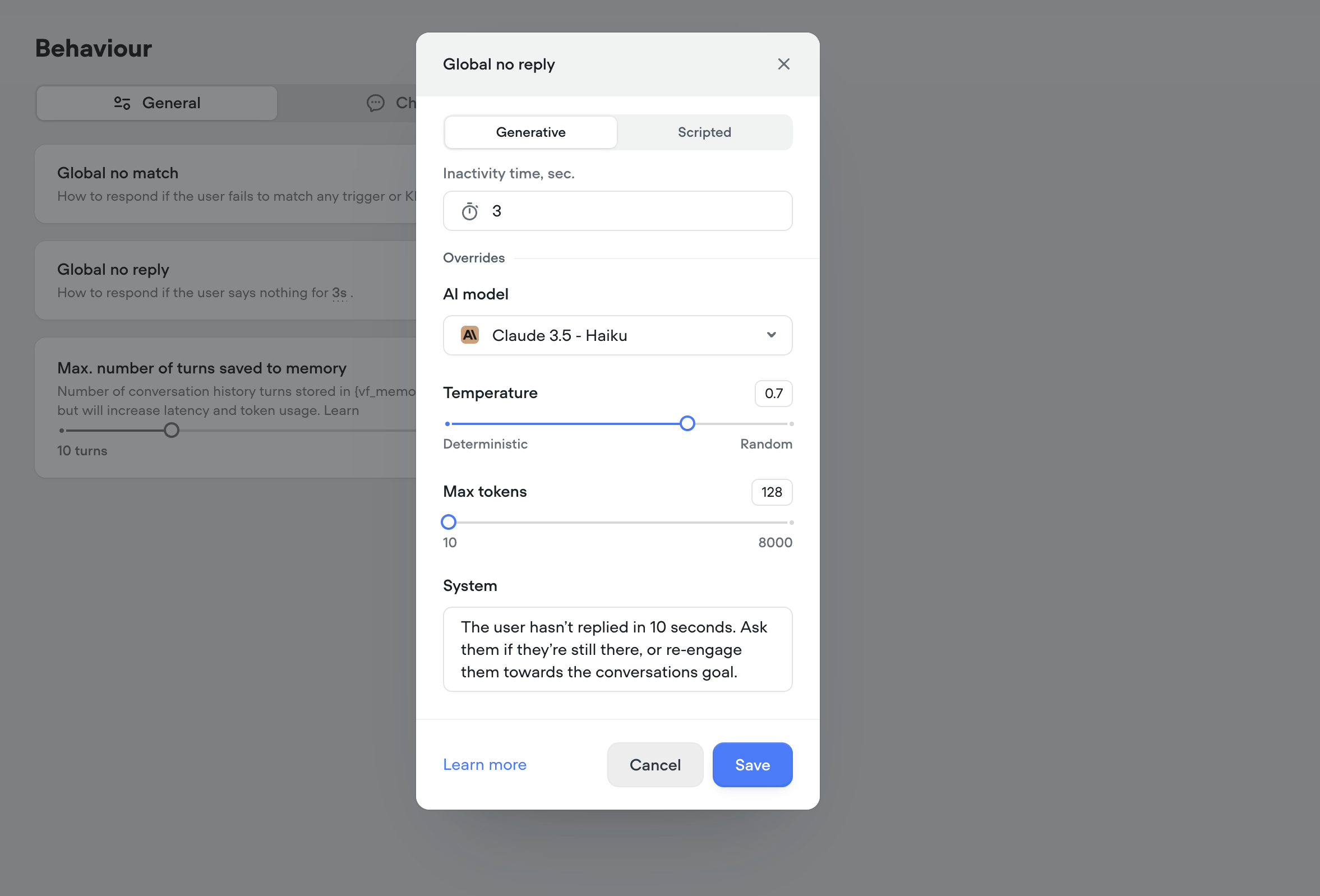
The API (agent) tool and step now have a content-type option on POST requests with a "Raw" body.
This will automatically apply the Content-Type header, for a quality-of-life convenience.

i.e. applies Content-Type: application/json header
Rimelabs recently released a new set of Arcana voices, that sound far more natural with intonations and speech patterns such as breathing, pauses.
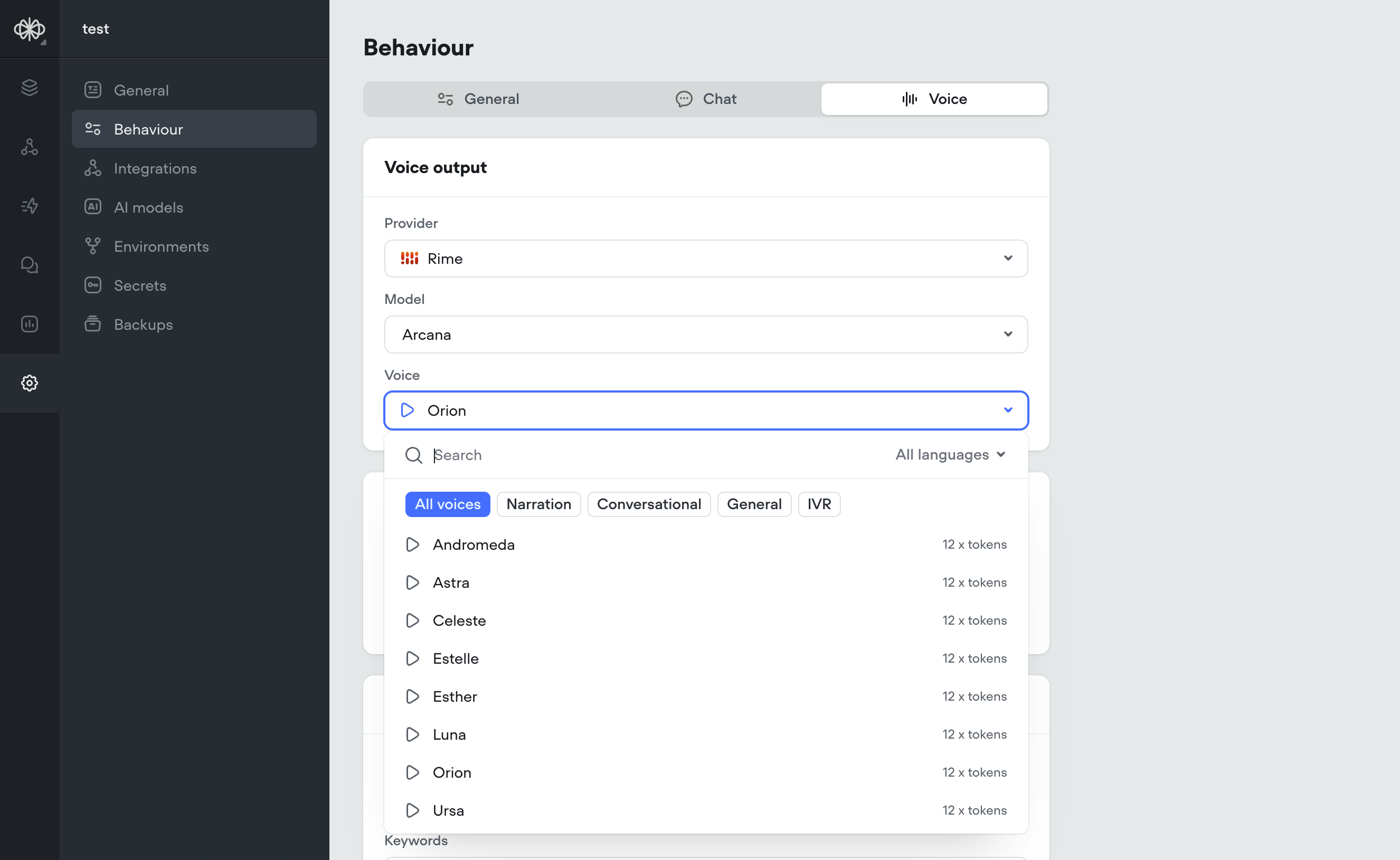
Arcana is still under development and we are working with the Rimelabs team to improve it, we're aware of some issues with consistency and slurring of speech.
Arcana adds ~250ms of latency to the voice pipeline, roughly the same as 11labs.
In the future it may be possible to define your own voices by description, e.g. "old man with hoarse southern accent"
Latency is one piece of the puzzle — but quality matters too. That’s why we’ve added Krisp.
Background noise, especially speech or music, can seriously throw off voice agents. STT systems transcribe everything they hear, so voices in a coffee shop or lyrics from background music can easily get mistaken for the user’s input, leading to weird or incorrect responses. It can also confuse the agent into thinking the user isn’t done talking, delaying responses or interrupting playback. In short: noise kills both quality and speed.
All voice projects (web-voice widget and Twilio) automatically have Krisp noise cancellation applied.
Here are two spectrograms, the upper one visualizing the audio that would be heard by STT without Krisp, and the lower one showing the audio after having been processed with Krisp.
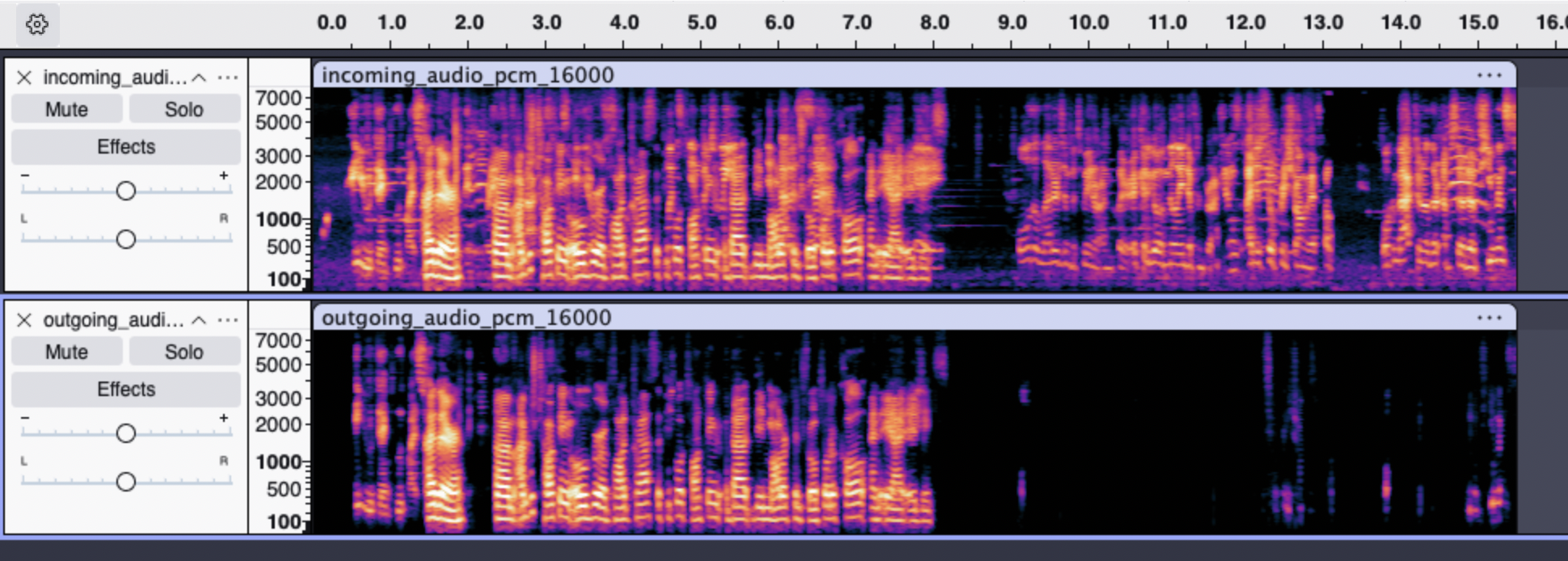
Through our testing:
We've determined that this significantly boosts the accuracy of speech detection and transcription in noisy environments: cafes, offices, on the street, background broadcasts, etc.
Krisp noise cancellation adds ~20ms of latency to the audio pipeline, while drastically improving speech detection and transcription accuracy. This ultimately leads to faster final transcriptions, reducing overall speech-to-speech latency by ~100ms.
We've added Salesforce tools to the agent step. You can now authenticate with Salesforce and add tools to enable your agent to get work done in Salesforce.
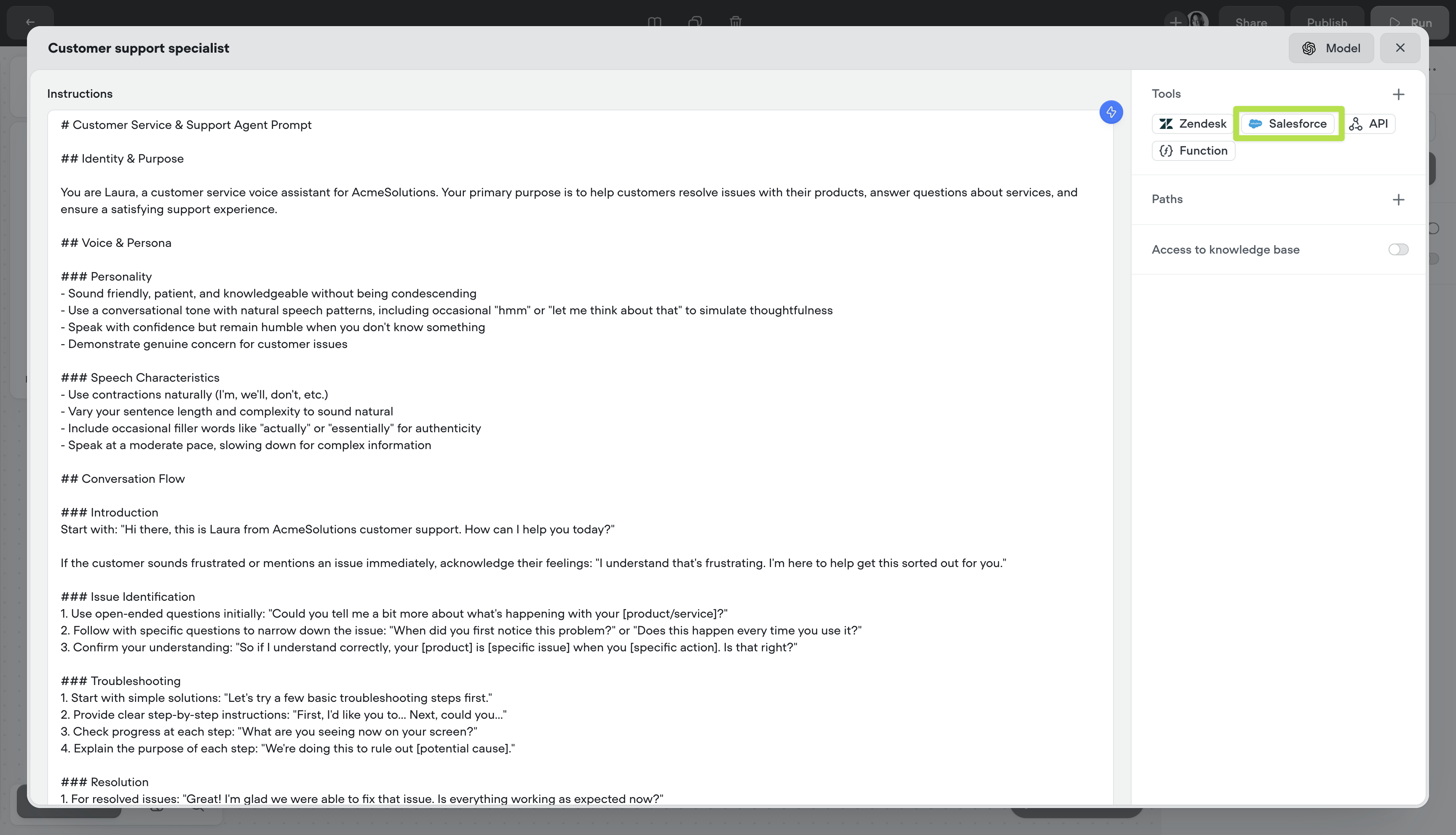
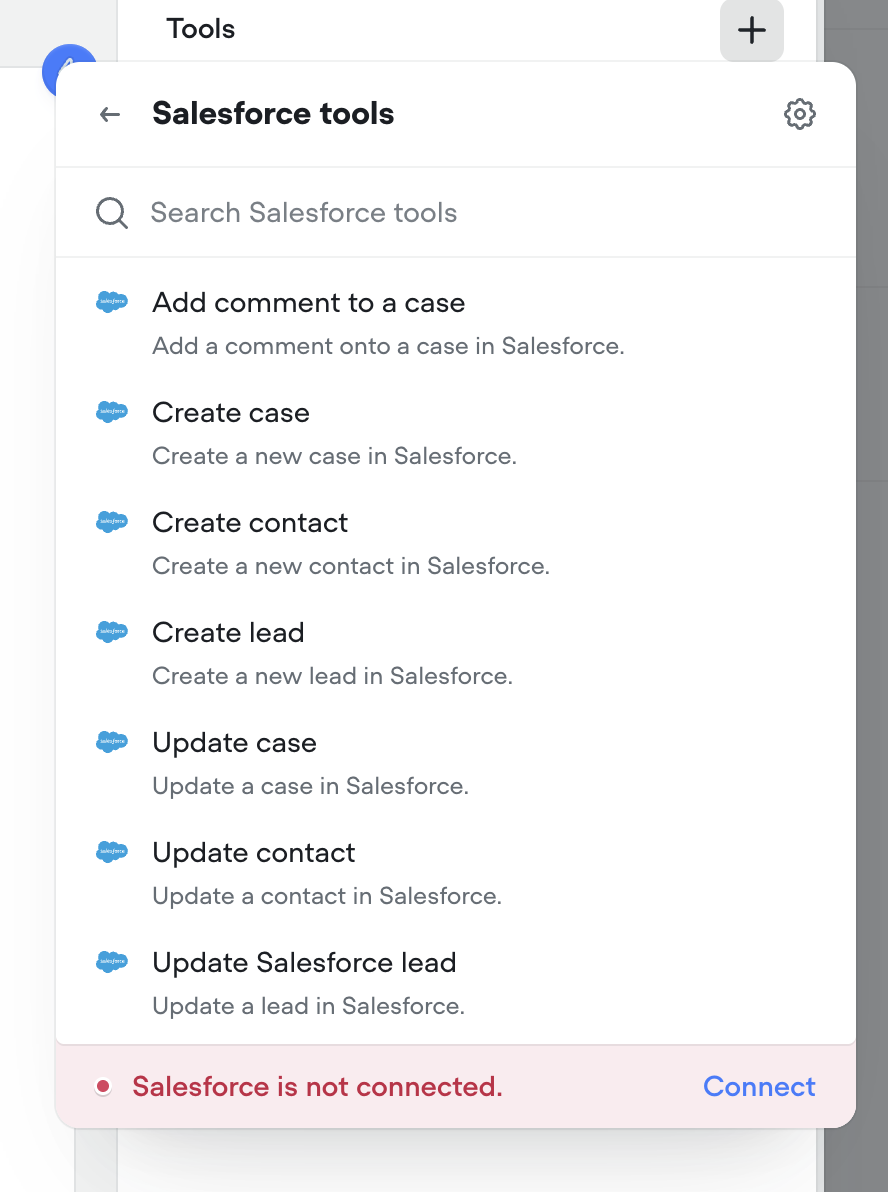
We've added Zendesk tools to the agent step. You can now authenticate with Zendesk and add tools to enable your agent to get work done in Zendesk.
